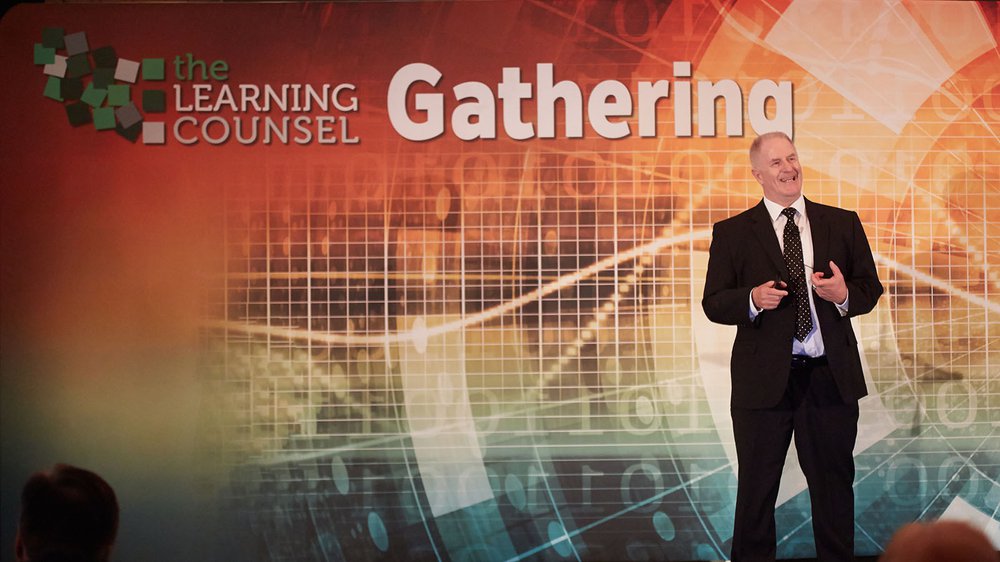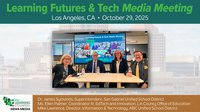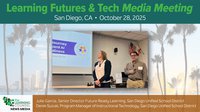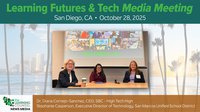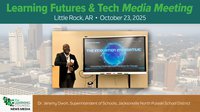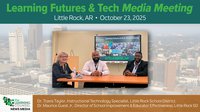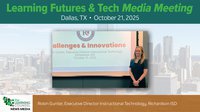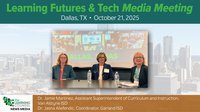This year’s keynote speaker at the Learning Counsel’s 2018 National Gathering in Houston was Kahle Charles, the Executive Director of Curriculum and Design at St. Vrain Valley Schools. Located approximately 30 miles north of Denver, St. Vrain Valley School District is home to more than 32,000 students and is the seventh largest school district in the state of Colorado.
St. Vrain is known for its student achievement, due in large part to an education redesign that began with a community vision and works through a student-centered approach that employs technology as a catalyst for innovation.
According to Charles, “We are born with only two fears – fear of falling and fear of loud noises. All the other fears we and our staffs have, we’ve learned along the way.” When we talk about education redesign, we need to plan for that with our staffs. We’re asking them to change practices that dates back hundreds of years, in many cases remaining constant since the industrial revolution.
With change comes the possibility of failure. Life has taught us to fear failure. “Changing practice is uncomfortable,” said Charles. “There’s a comfort in doing what we have always done. But we have to help our staffs get out of their comfort zones. Because that is where the magic happens. We want them to take a chance, to create a better educational experience for our students, because our students deserve it.”
The conversation starts with vision. This has been talked about a lot. When you start your conversation about education redesign, make sure you start with your vision as the centerpiece. You’ll come back to your vision again and again. St. Vrain developed their vision with their staff, the community and even the students. According to Charles, this approach gives the stakeholders more that just buy-in. It gives everyone ownership.
When determining a vision, start with the “why.” What is your purpose? What do you want to be as a district? If you have a clearly defined purpose, a vision and a why, then you can move into your action plan. But if you go directly to your action plan, you are going to have trouble because you’re going to get push-back.
St. Vrain began with a comprehensive needs assessment.
They realized they were acting like a group of individual schools instead of a cohesive system. Instead of creating an environment that challenged every student to find excellence, they were leveling the playing field for everyone. They decided to take a system’s approach. Instead of leveling the playing field, they were determined to raise the field for everyone.
The district didn’t want to dictate how their newly crafted vision was to be reached; they decided to provide tools along the way and allow every teacher to come to the vision on their own. St. Vrain spent a year engaging their community in answering two key questions: What type of actions should instructional technology support for both teachers and learners? What attributes should the learning spaces have in order to support good teaching and learning with technology?
The result was wonderfully simple. Students and teachers should have the tools they need to investigate, collaborate, communicate, create, model and explore concepts and content in authentic context. Technology should be an amplifier for everything the district can do in their schools. The result is that students are now fully engaged and receive a highly rigorous education that leverages technology to build truly personalized learning environments for student advancement and growth.
Personalized learning is about student choice, about being able to explore things from unique vantage points that are personally relevant. St. Vrain is a big proponent of blended learning, but it all begins with a student-centered approach. Content is placed online and students can access it 24/7. They can work at their own pace and sometimes from their own place. Teachers are no longer on the stage; they are the facilitators of the process.
Watch the video for Kahle Charles’ dynamic talk at the 2018 Gathering.

